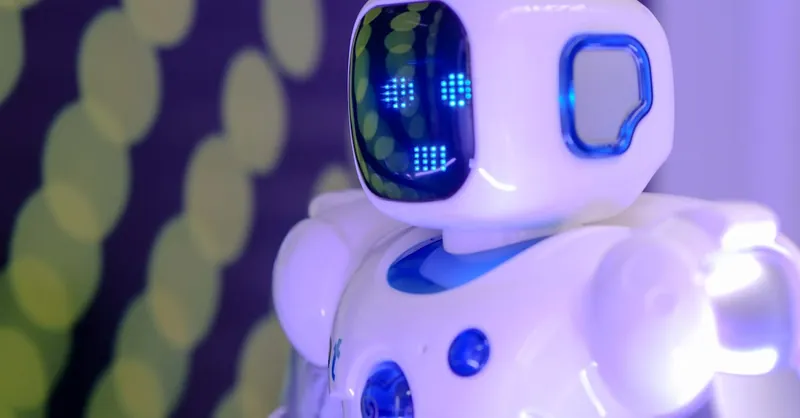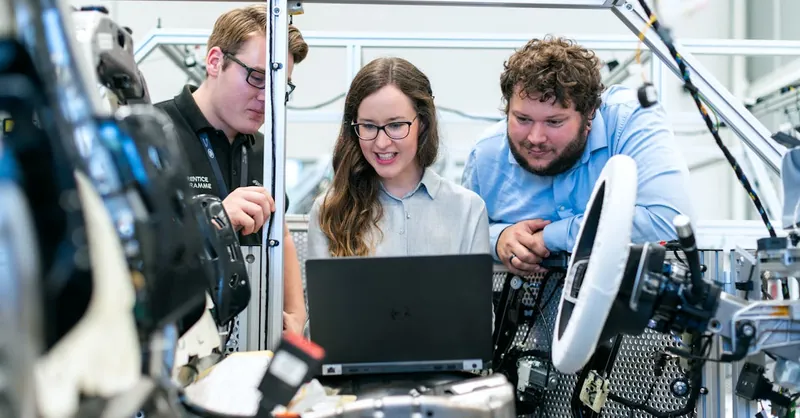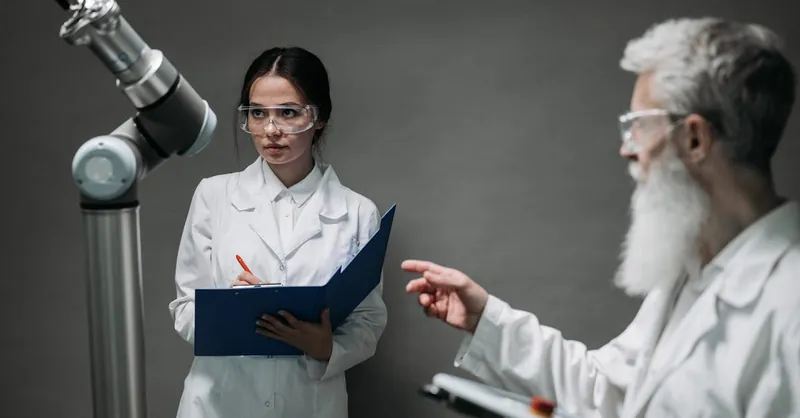Top Technology Trends in Workplace Automation to Boost Productivity
Category: Productivity & Automation
Unlocking the Future: Technology Trends Shaping Workplace Automation
In today’s fast-evolving work landscape, professionals, entrepreneurs, and tech enthusiasts are relentlessly seeking effective ways to harness technology for enhanced productivity. If you’ve landed here, you likely understand the transformative potential of workplace automation but are eager to pinpoint the latest, real-world trends that can streamline your operations, reduce errors, and free up valuable time. You might be exploring how AI-driven tools, robotic process automation, or intelligent workflows can seamlessly integrate with your existing systems, helping your business or team scale smarter, not harder.
This post dives deep into the latest technology trends in workplace automation — not just broad concepts but actionable insights tailored to your tech-savvy mindset. Unlike generic lists, we analyze emerging strategies and tools proven to redefine productivity in 2024 and beyond. Whether you’re looking to automate routine tasks, leverage AI for decision-making, or optimize workflows, this guide will empower you to adopt the right technologies that align with your goals. Let’s journey through the most impactful automation trends shaping tomorrow’s workplaces and help you stay ahead of the curve.
- Unlocking the Future: Technology Trends Shaping Workplace Automation
- Understanding Workplace Automation: Definition, Scope, and Why It Matters Now More Than Ever for Productivity Enhancement
- AI and Machine Learning Integration: Revolutionizing Task Automation
- Robotic Process Automation (RPA) Advances: Elevating Workflow Efficiency Across Industries
- Hyperautomation: The Next-Level Automation Concept for End-to-End Process Transformation
- Cloud-based Automation Platforms: Scalability and Flexibility in Modern Workplace Automation
- Automation in Remote and Hybrid Work Environments: Technologies Enabling Seamless Productivity and Collaboration Beyond Traditional Office Setups
- Intelligent Workflow Optimization: Leveraging Automation to Map, Analyze, and Continuously Improve Business Processes
- Security and Compliance in Automated Workplaces: Addressing Data Privacy, Governance, and Risk Management as Automation Scales
- Human-AI Collaboration: Enhancing Workforce Productivity by Blending Human Creativity with Machine Efficiency
- Future Outlook: Emerging Innovations Shaping the Next Decade of Workplace Automation
Understanding Workplace Automation: Definition, Scope, and Why It Matters Now More Than Ever for Productivity Enhancement
Workplace automation refers to the use of technology to perform recurring tasks or processes with minimal human intervention. This includes deploying AI-powered software, robotic process automation (RPA), and intelligent workflow systems to handle activities such as data entry, scheduling, customer support, and complex decision-making. The scope of workplace automation spans multiple industries—from manufacturing and finance to marketing and human resources—transforming how daily operations are executed.
The urgency to adopt workplace automation has never been more critical for productivity enhancement. In today’s hyper-competitive environment, businesses face increasing pressure to deliver faster results while maintaining quality and reducing operational costs. Automation drives efficiency by:
- Eliminating repetitive, time-consuming tasks that drain human resources.
- Minimizing human error and improving accuracy across workflows.
- Accelerating data processing and analysis, enabling smarter decisions.
- Freeing employees to focus on strategic, creative work, boosting overall job satisfaction and innovation.
Moreover, the rapid advancements in AI and machine learning have expanded automation’s capabilities beyond routine processes to complex cognitive tasks, making it a cornerstone of modern productivity strategies. Embracing workplace automation today equips organizations with the agility to adapt to evolving business demands, ultimately accelerating growth and sustaining a competitive edge in 2024 and beyond.

Image courtesy of Kindel Media
AI and Machine Learning Integration: Revolutionizing Task Automation
One of the most transformative trends in workplace automation today is the integration of AI and machine learning (ML) technologies. These advancements go far beyond traditional automation by enabling systems to learn, adapt, and make intelligent decisions without explicit programming. Key AI-driven capabilities such as natural language processing (NLP), predictive analytics, and cognitive automation are fundamentally reshaping how repetitive and complex tasks are automated, making workflows smarter, faster, and more intuitive.
Natural Language Processing (NLP)
NLP allows machines to understand, interpret, and generate human language, enabling seamless communication between employees and automated systems. This technology powers chatbots, virtual assistants, and automated email triaging tools that handle customer inquiries, schedule meetings, or provide real-time support. By automating language-based tasks, NLP significantly reduces manual workload and accelerates response times without sacrificing quality.
Predictive Analytics
Predictive analytics leverages ML algorithms to analyze historical data and forecast future outcomes, helping businesses make proactive decisions. In workplace automation, this means systems can predict supply chain disruptions, anticipate customer needs, or optimize resource allocation. Integrating predictive analytics into automation workflows transforms reactive processes into strategic, data-driven actions, maximizing operational efficiency.
Cognitive Automation
Cognitive automation combines AI techniques—including pattern recognition, NLP, and ML—to automate highly complex tasks that require judgment and decision-making. Unlike rule-based robotic process automation, cognitive automation can interpret unstructured data, learn from experience, and improve over time. This advancement enables the automation of tasks like contract analysis, fraud detection, and personalized marketing campaigns, vastly expanding automation’s scope and impact.
Together, these AI and machine learning technologies are propelling workplace automation toward an era where systems do not just execute tasks but continuously optimize them, driving unprecedented productivity gains. Organizations that harness AI-powered automation will unlock smarter workflows, reduce operational bottlenecks, and empower their workforce to focus on higher-value initiatives in 2024 and beyond.

Image courtesy of Pavel Danilyuk
Robotic Process Automation (RPA) Advances: Elevating Workflow Efficiency Across Industries
Robotic Process Automation (RPA) continues to be a cornerstone of workplace automation, but 2024 is witnessing a significant evolution in its capabilities. Modern RPA tools are no longer confined to automating simple, rule-based tasks; instead, they are becoming more sophisticated, integrating AI elements to handle complex, repetitive workflows across diverse industries—from finance and healthcare to manufacturing and customer service. These advanced RPA solutions help organizations drastically reduce manual effort, increase process accuracy, and accelerate turnaround times for critical business operations.
Key advancements redefining RPA include:
-
Intelligent Automation Integration: Combining RPA with AI-driven technologies such as machine learning and natural language processing enables bots to process unstructured data, make context-aware decisions, and adapt to changing workflows dynamically.
-
Scalable and Cloud-Native Architectures: The rise of cloud-based RPA platforms allows businesses to deploy, manage, and scale bots more efficiently, supporting remote workforce environments and hybrid infrastructures without sacrificing security or performance.
-
Hyperautomation: This holistic approach leverages RPA alongside process mining, analytics, and AI to identify automation opportunities end-to-end, resulting in continuous process improvement and deeper operational insights.
-
User-Friendly Low-Code/No-Code Interfaces: Modern RPA platforms emphasize accessibility by providing drag-and-drop tools that empower business users, not just developers, to build and modify automation workflows quickly, accelerating digital transformation initiatives.
By adopting these advanced RPA technologies, organizations unlock unprecedented levels of workflow automation that go beyond time savings—they create resilient, intelligent systems capable of evolving with business demands. Embracing sophisticated RPA in 2024 amplifies productivity, minimizes human error, and frees employees to focus on strategic, innovation-driven work, making it an indispensable component in the future of workplace automation.

Image courtesy of Kindel Media
Hyperautomation: The Next-Level Automation Concept for End-to-End Process Transformation
Hyperautomation represents the future of workplace automation, combining cutting-edge technologies such as Robotic Process Automation (RPA), Artificial Intelligence (AI), and advanced analytics to orchestrate comprehensive, end-to-end automation strategies. Unlike traditional automation that targets isolated tasks, hyperautomation enables organizations to automate entire business processes by integrating multiple intelligent tools, creating seamless workflows that adapt and evolve in real time.
Key features that define hyperautomation include:
- Integration of Diverse Technologies: Hyperautomation unites RPA’s task execution capabilities with AI’s cognitive power and analytics-driven insights, allowing for automation of both routine and complex decision-making processes.
- Process Mining and Discovery: Advanced analytics tools analyze workflows to identify automation opportunities and inefficiencies, ensuring that automation is not just implemented but optimized continuously.
- Scalability and Flexibility: Hyperautomation platforms support scalable deployment across departments and systems, enabling organizations to automate processes across functions such as finance, HR, supply chain, and customer service seamlessly.
- Continuous Improvement: With AI-powered monitoring and feedback loops, hyperautomation systems learn from ongoing operations to refine workflows, improve accuracy, and increase productivity over time.
By incorporating hyperautomation into workplace automation strategies, businesses unlock the potential for complete digital transformation, reducing human error, accelerating processing times, and driving greater operational agility. In 2024, hyperautomation is not just a buzzword but a critical approach for organizations aiming to future-proof their workflows, maximize ROI on automation investments, and empower their workforce to focus on innovation and strategic growth.

Image courtesy of Pavel Danilyuk
Cloud-based Automation Platforms: Scalability and Flexibility in Modern Workplace Automation
As organizations increasingly prioritize agility and seamless scalability, cloud-based automation platforms are rising as a dominant trend in workplace automation. Unlike traditional on-premises automation tools, cloud deployment offers unmatched flexibility, enabling businesses to quickly scale automation solutions up or down according to their evolving needs without the constraints of physical infrastructure. This adaptability is critical in dynamic business environments where demand fluctuates and rapid innovation is necessary.
Key advantages and trends in cloud-based automation include:
- On-Demand Scalability: Cloud platforms allow enterprises to instantly provision automation resources to handle peak workloads or expand across departments, driving cost-efficiency and operational continuity.
- Enhanced Collaboration: With cloud-native solutions, automation workflows and dashboards become accessible from anywhere, supporting remote and hybrid teams while ensuring real-time updates and centralized control.
- Integrated AI and Analytics: Leading cloud automation platforms bundle AI capabilities and advanced analytics, enabling businesses to leverage machine learning models and data insights directly within their automated processes for smarter decision-making.
- Security and Compliance: Modern cloud providers invest heavily in security frameworks, offering robust encryption, identity management, and compliance certifications that align with industry standards—addressing common concerns around data protection in automation.
- Rapid Deployment and Updates: Cloud environments facilitate frequent feature releases and seamless integration with other SaaS applications, ensuring automation tools remain cutting-edge and customizable without disruption.
Embracing cloud-based automation platforms empowers organizations to build resilient, intelligent automation ecosystems that evolve with their strategy, reduce IT overhead, and accelerate digital transformation initiatives. In 2024, leveraging cloud deployment is essential for businesses aiming to maximize productivity gains through flexible, scalable, and secure workplace automation solutions.

Image courtesy of Mikhail Nilov
Automation in Remote and Hybrid Work Environments: Technologies Enabling Seamless Productivity and Collaboration Beyond Traditional Office Setups
The shift toward remote and hybrid work models is no longer a temporary trend but a fundamental change in how businesses operate. Automation technologies are critical in addressing the challenges that come with distributed teams, ensuring that productivity and collaboration remain seamless regardless of physical location. In 2024, organizations increasingly rely on intelligent automation tools designed to support flexible work environments by integrating communication, task management, and workflow automation into unified digital ecosystems.
Key technologies driving automation in remote and hybrid workplaces include:
-
AI-Powered Collaboration Platforms: These platforms leverage machine learning to facilitate real-time communication, automate meeting scheduling, transcribe conversations, and generate actionable insights from discussions, enhancing team alignment and decision-making without the delays typical of remote coordination.
-
Automated Workflow Orchestration: Intelligent workflow tools automate the routing of tasks and approvals across geographically dispersed teams, reducing bottlenecks and ensuring accountability. These systems adapt dynamically to employee availability and role-based priorities, enabling smooth process execution regardless of time zones or working hours.
-
Virtual Assistants and Chatbots: Deployed within communication apps, virtual assistants automate routine queries, onboarding processes, and IT support, allowing remote workers to resolve issues quickly and maintain focus on their core responsibilities.
-
Cloud-Native Project Management Automation: Integrations between cloud project platforms and automation tools allow automatic updates, progress tracking, and deadline reminders, keeping remote teams synchronized and informed without manual intervention.
By harnessing these automation innovations, businesses can replicate the efficiency and connectivity of a traditional office environment while empowering employees with the flexibility of remote and hybrid work arrangements. This not only boosts productivity but also enhances employee satisfaction and reduces operational friction — critical advantages for sustaining competitive performance in the evolving world of work.

Image courtesy of Ketut Subiyanto
Intelligent Workflow Optimization: Leveraging Automation to Map, Analyze, and Continuously Improve Business Processes
In 2024, intelligent workflow optimization stands at the forefront of workplace automation, merging process automation with data-driven insights to transform how businesses operate. Rather than merely automating isolated tasks, this trend focuses on mapping, analyzing, and continuously refining entire workflows by harnessing automation tools integrated with AI and process mining technologies. This approach not only enhances efficiency but also uncovers hidden bottlenecks and empowers organizations to adapt workflows dynamically in response to changing business priorities.
Key Components of Intelligent Workflow Optimization
-
Process Mapping and Discovery: Automation platforms equipped with process mining capabilities automatically capture and visualize end-to-end workflows based on actual task execution data. This eliminates reliance on manual documentation, providing an accurate, real-time blueprint of business processes.
-
Analytics-Driven Bottleneck Identification: By analyzing process performance metrics—such as cycle times, handoffs, and error rates—organizations can pinpoint inefficiencies and prioritize automation opportunities that yield the highest ROI.
-
Continuous Improvement Loops: Intelligent automation systems harness AI to monitor workflow performance continuously, adapting rules and decision trees as new data emerges. This enables businesses to refine operations proactively rather than reactively, ensuring workflows remain optimized as market conditions and organizational goals evolve.
-
Seamless Integration Across Systems: Intelligent workflows orchestrate activities across disparate applications and departments, breaking down silos by automating data exchange and coordinating multi-step processes, thus fostering greater collaboration and transparency.
By implementing intelligent workflow optimization, companies realize significant productivity gains, reduced operational risk, and enhanced agility. This automation-driven strategy is essential for businesses seeking to outpace competitors by delivering faster, more consistent outcomes while maintaining the flexibility to pivot as demands shift in today’s fast-paced market. Embracing these intelligent workflow methodologies helps organizations scale their automation initiatives from task-level efficiencies to comprehensive, sustainable process excellence.

Image courtesy of ThisIsEngineering
Security and Compliance in Automated Workplaces: Addressing Data Privacy, Governance, and Risk Management as Automation Scales
As workplace automation accelerates across industries, security and compliance have become paramount concerns that organizations cannot afford to overlook. The expansion of automated systems involves the handling of vast amounts of sensitive data, spanning personal information, financial records, intellectual property, and more. Ensuring robust data privacy and regulatory compliance is critical to mitigating risks such as data breaches, unauthorized access, and legal penalties—challenges that grow in complexity as automation scales.
Key focus areas for securing automated workplaces include:
-
Data Privacy and Protection: Implementing strong encryption protocols, role-based access controls, and continuous monitoring guards against unauthorized data exposure. Automation tools must comply with global privacy frameworks like GDPR, CCPA, and industry-specific regulations to ensure sensitive information is handled transparently and responsibly.
-
Governance and Policy Enforcement: Clearly defined governance structures guide automation deployment, ensuring consistent application of security policies and ethical AI use. Automated workflows should include audit trails and compliance checkpoints that validate adherence to internal standards and external laws.
-
Risk Management and Threat Detection: Integrating AI-powered security analytics into automation platforms enables real-time detection of anomalies and vulnerabilities. Proactive risk assessments combined with automated incident response mechanisms reduce the window for cyberattacks and operational disruptions.
-
Vendor and Third-Party Oversight: As many organizations rely on third-party automation and cloud service providers, rigorous evaluation and continuous oversight of vendor security practices are essential. Contractual agreements should mandate compliance with stringent security requirements to safeguard data across the automation ecosystem.
By embedding security-by-design principles and compliance frameworks into workplace automation strategies, businesses not only protect their assets but also build trust with customers, partners, and regulators. In 2024, prioritizing security and governance is a strategic imperative that empowers organizations to confidently scale automation initiatives while minimizing risk exposure in an increasingly interconnected digital workplace.

Image courtesy of Antoni Shkraba Studio
Human-AI Collaboration: Enhancing Workforce Productivity by Blending Human Creativity with Machine Efficiency
A pivotal trend in workplace automation is the rise of Human-AI collaboration, which strategically combines human creativity, intuition, and emotional intelligence with the speed, precision, and scalability of AI-powered systems. Rather than replacing human workers, this synergy elevates productivity by enabling employees to focus on high-value, strategic tasks while AI handles repetitive, data-intensive, and analytical processes. This collaborative approach creates a dynamic workforce where humans and machines complement each other's strengths, driving innovation and operational excellence.
Key Benefits of Human-AI Collaboration in Workplace Automation
- Augmented Decision-Making: AI systems rapidly process vast datasets and generate actionable insights, while human judgment contextualizes this information to make nuanced decisions, improving accuracy and speed.
- Creativity and Innovation Boost: By offloading routine work to AI, employees have more bandwidth to engage in creative problem-solving, ideation, and strategy development that machines cannot replicate.
- Personalized Employee Experiences: Intelligent AI tools can tailor workflows, learning paths, and task assignments based on individual strengths and preferences, fostering higher engagement and productivity.
- Adaptive Workflows: Human feedback integrated into AI algorithms enables continuous refinement of automated processes, making workflows increasingly agile and aligned with organizational goals.
- Improved Collaboration: AI-enhanced communication platforms facilitate smarter scheduling, context-aware recommendations, and real-time language translation, empowering distributed teams to collaborate more effectively.
Embracing Human-AI collaboration transforms workplace automation from a purely technical implementation into a strategic enabler of workforce empowerment and innovation. Forward-thinking organizations in 2024 are leveraging this partnership to build resilient, future-ready teams that harness the strengths of both people and technology—maximizing productivity while enriching the employee experience.

Image courtesy of Mikael Blomkvist
Future Outlook: Emerging Innovations Shaping the Next Decade of Workplace Automation
As we look ahead, the future of workplace automation is being defined by rapidly emerging innovations that promise to revolutionize productivity and operational efficiency even further. Among these, low-code and no-code automation platforms, AI-powered advanced analytics, and comprehensive workforce reskilling initiatives stand out as pivotal drivers shaping the automation landscape over the next decade.
Low-Code Automation: Democratizing Workflow Automation
Low-code automation platforms are transforming how businesses build and deploy automated workflows by enabling users with minimal coding experience to create sophisticated automation solutions. This democratization accelerates digital transformation by:
- Empowering business users and citizen developers to design customized automation without heavy reliance on IT departments.
- Expediting deployment timelines through reusable components and visual drag-and-drop interfaces.
- Facilitating greater adaptability and rapid iteration of automation in response to evolving business needs.
By lowering technical barriers, low-code automation expands the reach of automation across organizations, helping teams innovate faster and unlock productivity gains without complex coding requirements.
AI-Powered Analytics: Driving Smarter, Predictive Automation
The integration of AI-powered analytics within automated systems is setting new standards for business intelligence and operational decision-making. These advanced analytics leverage machine learning models and big data to:
- Uncover hidden patterns and correlations in workflow data.
- Predict future trends and potential bottlenecks before they occur.
- Enable proactive adjustments to automation processes for optimal outcomes.
This shift toward predictive and prescriptive automation transforms static workflows into adaptive, self-optimizing systems that continuously enhance efficiency and responsiveness, setting a new paradigm for workplace automation excellence.
Workforce Reskilling: Preparing Talent for the Automated Future
As automation becomes more pervasive, the reskilling and upskilling of the workforce emerge as critical strategic priorities. The future workplace will demand employees who can effectively collaborate with AI, manage automation tools, and focus on uniquely human skills such as creativity, critical thinking, and emotional intelligence.
Key components of successful workforce reskilling include:
- Continuous learning programs tailored to evolving technology landscapes and automation tools.
- Hybrid skill development, blending technical automation literacy with soft skills to maximize collaboration between humans and AI.
- Change management strategies that promote adoption and smooth integration of automation technologies into everyday work.
Organizations embracing workforce reskilling alongside automation investments will build resilient, agile teams ready to harness technology for long-term productivity and innovation gains.
Together, these emerging innovations—low-code automation, AI-powered analytics, and workforce reskilling—are not only shaping the trajectory of workplace automation but are also essential ingredients for future-proofing businesses. Staying ahead requires adopting these trends to build intelligent, adaptive workflows paired with a capable workforce, driving superior productivity and competitive advantage well into the next decade.

Image courtesy of Pavel Danilyuk
